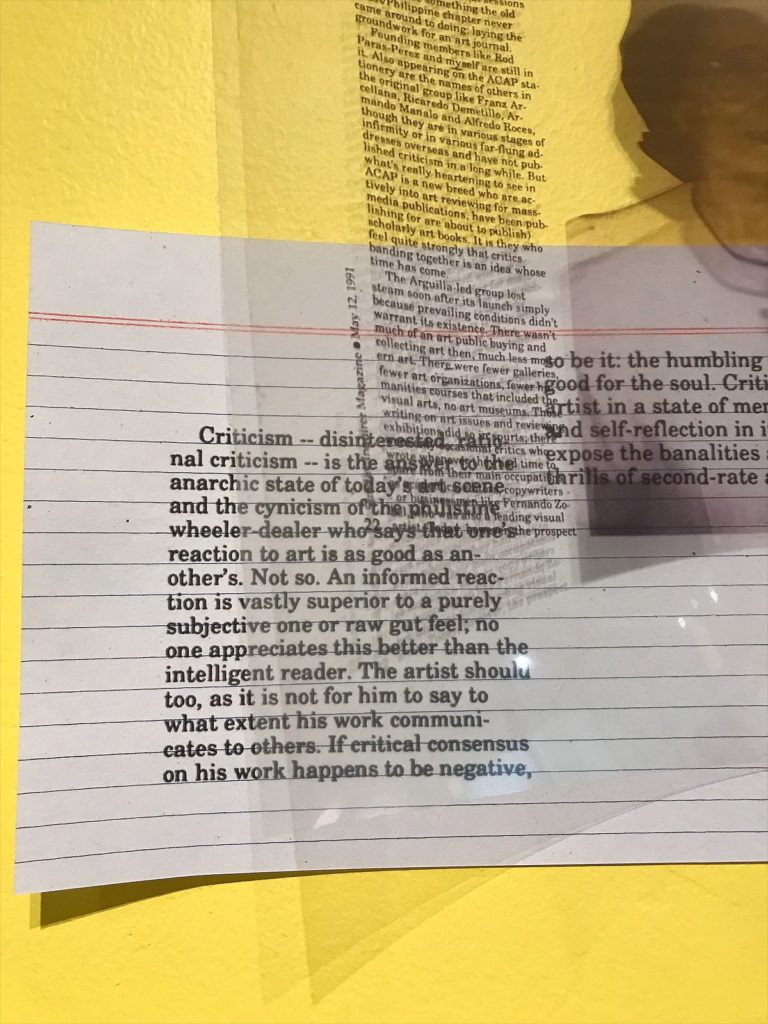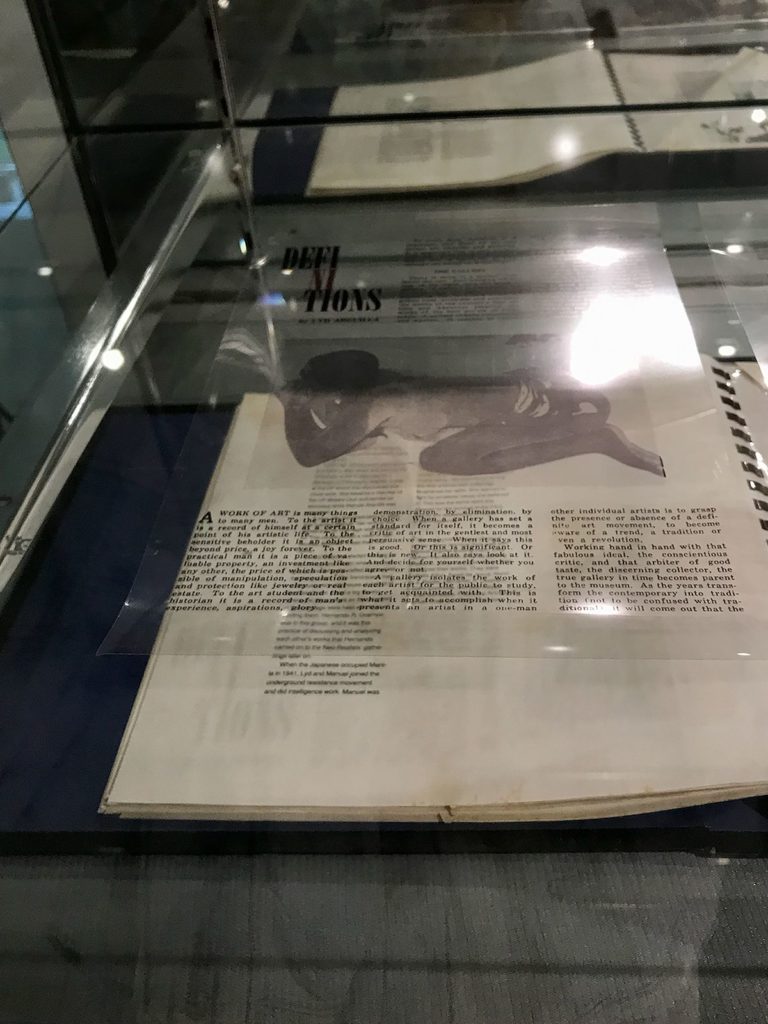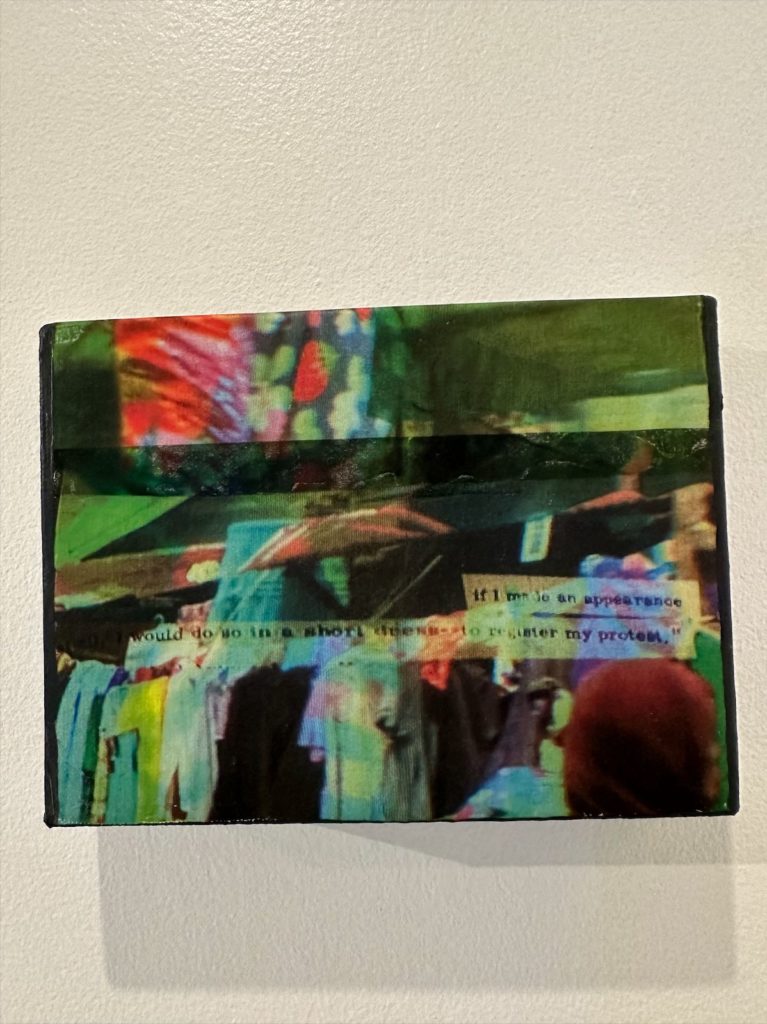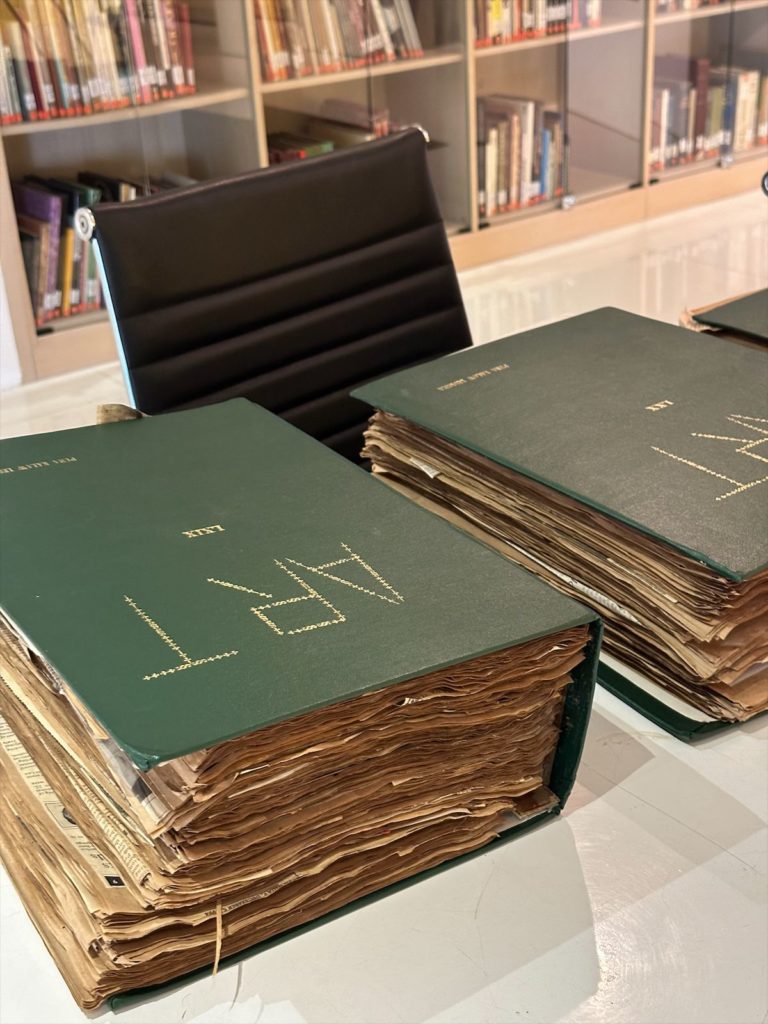Exhibit review by Lorenze Hope F. Balbido
In 1948, Purita Kalaw-Ledesma established the Art Association of the Philippines: an organization that not only saw how bouts of change in Philippine art arrived and settled, but was the catalyst that brought them about. The AAP brought out art critics who helped guide the direction of the local art scene amidst a time of fluctuation; when artists – especially emerging modernists – were rejected by unbending traditionalists and lacked their own spaces to develop their practices. How far has Philippine art criticism progressed since the founding of the AAP? And what kind of future does it promise as we evaluate its past and look at its present? In the quaint office of the Purita Kalaw-Ledesma Center in Makati, the Critic/ism in Flux exhibit provides an insightful retrospect.
Upon entering, you immediately have a grasp of the relatively small space. The PKL center, apart from being an exhibition space, is also a research center and library. It houses the PKL archives, including Purita Kalaw-Ledesma’s scrapbooks and limited-copy Filipiniana books. You might be entering with limited knowledge on the subject, but the space proves to be a convenient reference source.
Nice Buenaventura’s “Mojibake” on the wall immediately calls your attention as the staff goes on to unroll the floor-length scroll. It takes quite some time to understand the work and how it connects with the exhibit, its form different from the rest. But this point of confusion mainly comes from the fact that the text was in undecipherable letters and symbols. Beside it, a copy of Purita Kalaw-Ledesma’s book, “The Struggle for Philippine Art,” as well as selections from her scrapbooks, is a much better opener. These lay the foundation for those familiarizing themselves with the local art criticism scene. The compiled bodies of text are by writers well-known in the field as its pillars, like Leonidas Benesa and Cid Reyes. Selected works from the scrapbooks were printed out on acetate sheets and layered onto index cards that quote them.
 Selected articles from the scrapbooks of Purita Kalaw Ledesma, on acetate and newsprint
Selected articles from the scrapbooks of Purita Kalaw Ledesma, on acetate and newsprint
It is noticeable throughout the exhibit that many essays and notes were printed on acetate; the transparency of the material allows the viewer to layer it onto other works. It reminds how text is a source of inquiry, and that meaningful inquiry involves placing one idea against another, accommodating various perspectives, which, in turn, reveals truths and realizations.

This inquiry is further delved into through the contrast of past and present. This was made evident by the added presence of new media as you progress through the space. The viewer is introduced to the winners of the PKL prize – now on its 10th year – through a video and printed copies of their works (though also accessible through the digital platforms that published them). Anna Miguel Cervantes’ image transfer cured photos of the Marawi siege, gives further contrast and is comparable to the acetate sheets; it hones in, still, on inquiry through layering. Just as you’re reading a body of text, the story unfolds as you read through it — the same goes for the exhibit. First gaining footing on the field of art criticism, soon enough, you find yourself amidst a world that bore testament to the changing times.

“A protest is a circle draped over a body” (2024) by Anna Miguel Cervantes
The usual configuration of exhibit spaces is that visual art pieces take center stage, with text to support the meaning-making and connection-building. In the Critic/ism in Flux exhibit, however, text ceases to be the supporting character and positions itself front and center; it itself becomes the art piece. Many people tend to be disinterested in text and often skim through it, especially when it stretches onto multiple, single-spaced lines without any visuals to aid the reading. But the exhibit is far from boring nor does it merely spit out word upon word upon word (well, that is, if you’re coming in with a curiosity for Philippine art institutions, at least). It achieves this by exploring different ways on how text is presented — a reflection of the band of Filipino art critics past and present (including the proponent herself) who were not just writers. They also “wore different hats” as artists, curators, cultural workers, patrons, and collectors.

Now, 76 years since the founding of AAP, even with better opportunities and bigger, more diverse communities, the field is still in a constant state of fluctuation – and it still will be even beyond the present. Such becomes the need for criticism in a world constantly shifting and redefining the value and meaning of art. Such becomes the need for criticism to chronicle how Philippine art fared against these shifts; against a seeming battlefield always fraught with sociopolitical turbulence, global influences, and the bare, burning passion for art. You might feel as if you were interfering with the work being done on the desk by the staff at the very middle of the quiet space, afraid to cause disturbance. But really, it becomes an invitation to take a seat and join in. This is the very thing the exhibit would want you to do. Critic/ism in Flux, like the art criticism process is, in itself, an inquiry, as the Philippine art scene continues to evolve and adapt. It requires its viewers to take the time to read, get acquainted, and be critical. From this inquiry, a message echoes out: they are envisioned to be this field’s future.
—
This text was originally submitted as a requirement for AMCRITM PAM1, an art criticism course in the Arts Management program in De La Salle-College of Saint Benilde. For their final paper, students were allowed to select an exhibit that they will critique, and the writer chose Critic/ism in Flux. The course was handled by Lara Acuin, winner of the 2015 Ateneo Art Awards – Purita Kalaw-Ledesma Prize in Art Criticism for The Philippine Star.
This review was published with permission from Lorenze Hope F. Balbido. It was independently written as part of the student’s coursework, and was neither solicited nor commissioned by Kalaw-Ledesma Foundation, Inc.
Critic/ism in Flux was also featured in The Philippine Star. You may read the review “The Flux — and Flex — of Art Criticism” by Scott Garceau here:
https://philstarlife.com/geeky/963343-flux-flex-art-criticism




